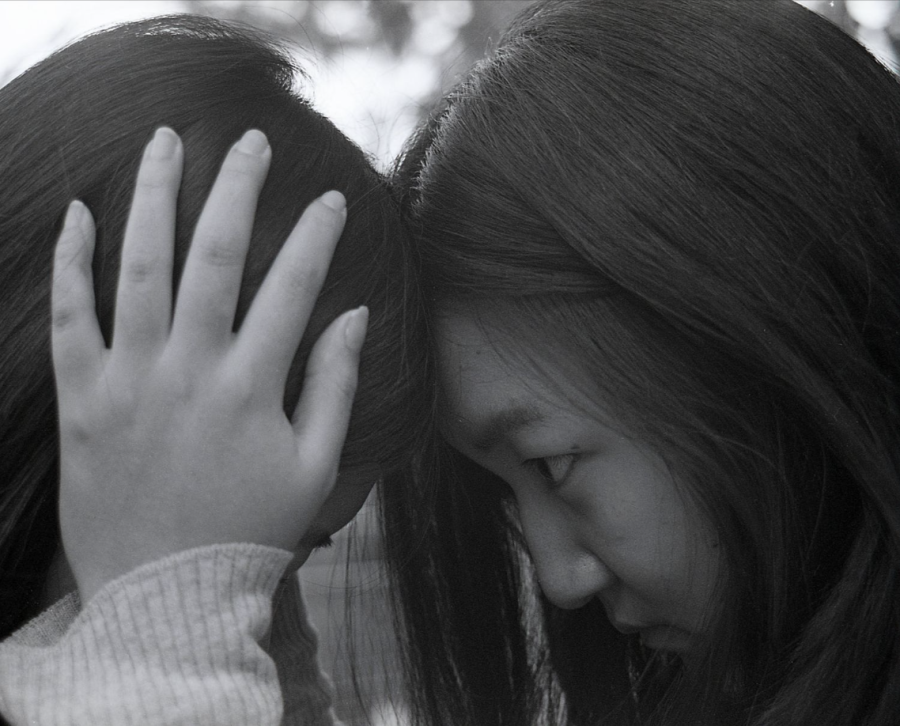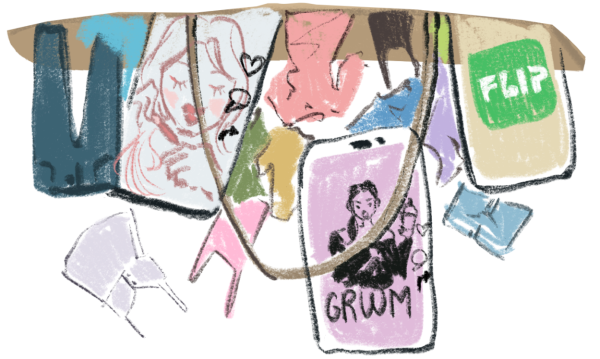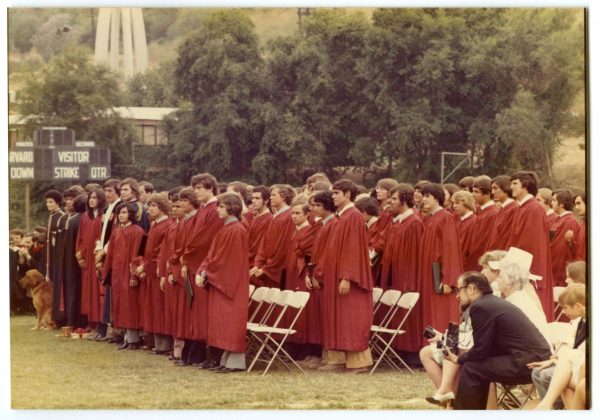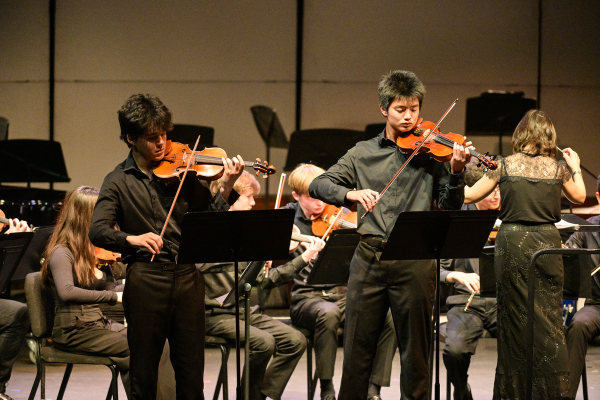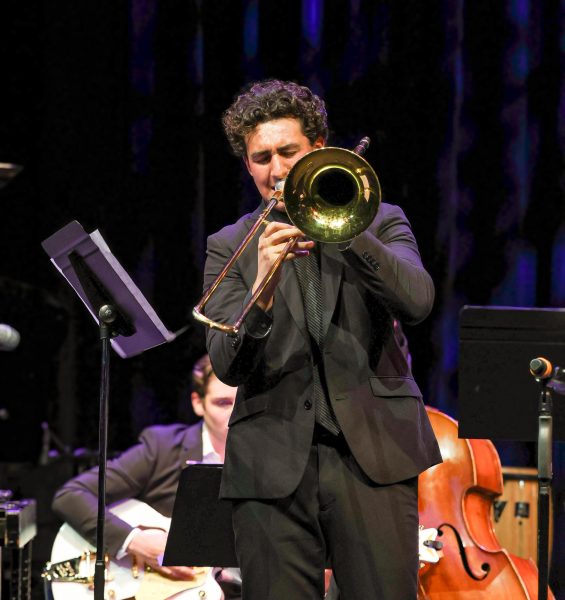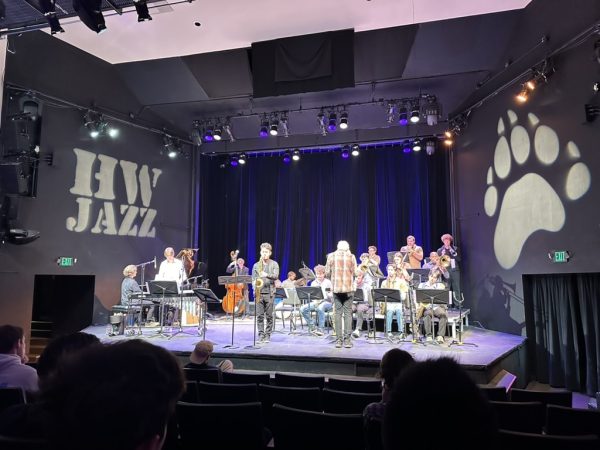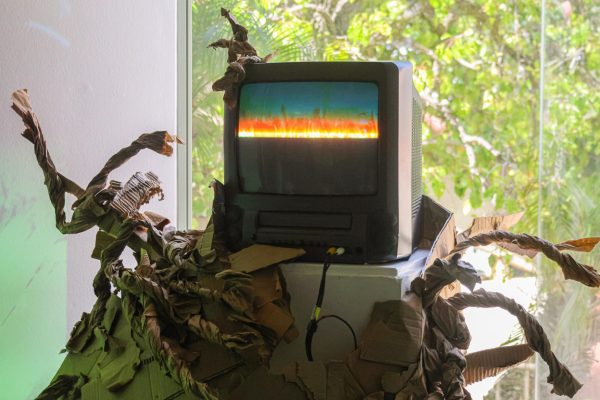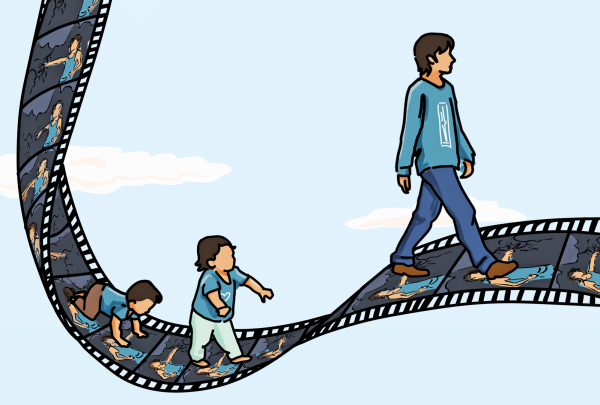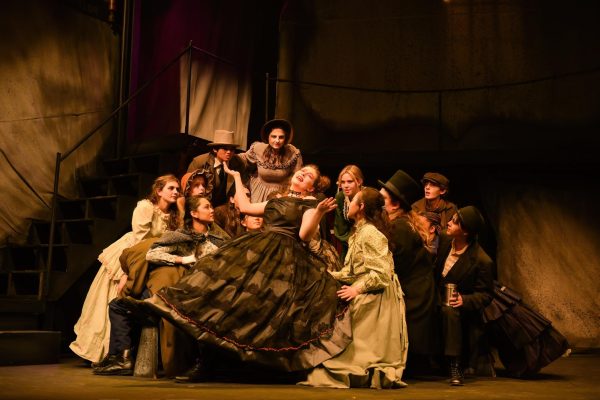Getty-ing Down to Business
August 25, 2022
As Olivia Suddleson ’24 stepped into the interior of the Getty Museum, she said she could not contain her excitement. She said the thought of seeing her photograph on display alongside the paintings, sculptures and crafts at the Getty Museum was hard to believe. As she entered the exhibition where her photograph was located and looked at each of the pieces that had been hand-picked by the staff at the museum, she said she could not believe her eyes.
Suddleson was selected as one of the 20 winners of the Teen Photography Open Call, an initiative organized by the Getty Museum and Amplifier, a nonprofit design lab. Her piece, “Reconnecting with EachOther,” was selected from a pool of 1,660 submissions from the United States, India, Canada, Brazil, Mexico and the United Kingdom. Suddleson said she was elated to see her photograph on display, available for the public to see.
“It was a gratifying experience, seeing my work at the Getty Museum,” Suddleson said. “When I traveled to [the museum] with my friends, it felt like an out-of-body experience to see my piece on display, open for the public to see. It made me glad to know that other people appreciated the things that I found beautiful. It was weird because I didn’t feel like my picture belonged at such a major museum, but, at the same time, I knew I worked for it.”
This year’s prompt, “Reconnecting with _____,” invited students to reflect on what reconnecting looked like during the COVID-19 pandemic. Suddleson said she wanted to explore the complications of maintaining a friendship through her piece, particularly through her posing and lighting.
“I came up with the name ‘Reconnecting with EachOther’ because I wanted to explore themes like how in a relationship you can give your everything to a person but not see it reciprocated, or how you can do everything but fail to overcome a disconnect,” Suddleson said. “In the photo, you can see two friends holding onto each other for dear life. But if you look at their faces, it’s sad and somber, even more so because of the black-and-white nature of the photo. Despite their physical connection, they are isolated, representing the painful and uncontrollable nature of a relationship.”
Suddleson said she enjoyed working with her classmates on the project, though that was nerve-racking at first.
“Originally, I wanted my friend and her boyfriend to be in the photo, given the intimate nature of the pose,” Suddleson said. “But our schedules never aligned, and I had to ask two of my classmates in my photography class to pose for me instead. This made me nervous, as with film, you can never know what the end product will look like. But, because they were classmates, they understood that I had an image in mind and were willing to let me direct them, even when I was being tedious. I recognize that not everyone is comfortable being on camera, so it meant a lot to me for them to step up and work with me.”
Like Suddleson, Ian Kim ’24 was chosen to display his photograph at the Getty Museum. He said his piece, “Reconnecting with Family History,” is an homage to his Korean-American roots.
“When I tackled this project, I wanted to create a series of photographs that [show] what it is like to be a third-generation Korean-American in the United States,” Kim said. “I found inspiration in my maternal grandmother, who immigrated in the 1960s. I tried to highlight my Korean-American heritage in my photograph, particularly in the props and objects that are representative of my grandmother’s journey from Korea to America.”
Kim said he was surprised to hear that he was selected to display his work at the Getty Museum.
“Being able to present at the Getty Museum was unexpected, as doing so had not been in my original plans for the project,” Kim said. “I made the piece, and I sent it off, but I didn’t know what to expect. I had to wait to see where it would go. So, when I heard that I had won a spot in the Getty Museum, everything that happened felt unexpected and unintentional.”
Kim said though he is proud of what he has accomplished, the process of crafting his piece was not an easy task given that he had to tackle a new medium.
“Working on the project was frankly difficult,” Kim said. “It was my first time working with film, rather than digital photography, and it definitely took some time for me to adapt. But, it gave me a chance to take a deeper dive into the photographs I was taking, and being able to take my eyes off of the photographs before I re-evaluated them was helpful.”
Similarly, Suddleson said working on the project was a demanding experience, especially because of the deadline and the limitations of working with film.
“The process of working on the project was rather stressful,” Suddleson said. “I struggle with deadlines, and when I started the project, I had a couple of weeks to complete it, which made executing it difficult. The project was completely on film, too. Usually, I like to go in not knowing what exactly I am looking for. But, with film, you have to be intentional because there is a limited supply of resources, and being able to execute what I wanted given the constraints was difficult.”
Still, Suddleson said she is excited to share her work with the public. She said she finds it gratifying to share her view of the world with Getty Museum visitors, though she said expressing her viewpoint has not been easy for her in the past.
“I’m not the best at putting things into words,” Suddleson said. “I can see it in my head, and I can feel it in my head, but I can’t say it in the right way. So, for me, having this picture in the Getty is my way of expressing my thoughts. As they say, a picture is worth a thousand words. It’s gratifying to know that people go through the Getty Museum every day and see my name beside my picture. They don’t know me, but they see something that I see. It’s a specific lens of the world, but it’s universal in the way that everyone can see it.”
Kim said he hopes his piece will help people recognize what it means to be a Korean-American immigrant in the United States and how this has influenced him.
“I hope that people, in looking at my piece, would recognize that being a Korean-American immigrant and being in that in-between is something real and established,” Kim said. “A great deal of my project was centered [on] painting my family history with immigration and how that has impacted me, and I hope that my photograph will tell people how being a third-generation Korean-American in the United States has shaped who I am and how I see my culture.”
Kim said he is looking forward to building on this experience by tackling more projects and expanding his medium.
“I started art in the summer before seventh grade through a program at [the school],” Kim said. “The school brought in survivors of the Holocaust and interviewed them, and we got the opportunity to make a public service announcement or an animated documentary reflecting on what we learned. I was in the latter group, making animated documentaries, and that was the first time I got to work with cameras. It’s been five years since I joined the program, and through that time, I’ve matured a lot as an artist. I’m looking forward to beginning new projects as well as branching out into other mediums. Right now, I am working on an animation project on comfort women.”
Kara Yoon ’23, who worked as a docent at the Getty Museum over the summer, said the museum’s attempts to modernize and diversify through initiatives like the Teen Photography Open Call are effective.
“The majority of the collections at the Getty Museum are of European art from the 18th to 20th century,” Yoon said. “But, from working at the Getty Museum, I can tell that the museum is trying to diversify its selections, and I think the Teen Photography Open Call is a part of this movement. It’s cool to see that younger artists, like those at Harvard-Westlake, are getting the chance to showcase their art. I think what the Getty Museum is doing in giving the younger generation a larger platform to showcase their art is transformative because it allows them to share their own unique experiences.”
Upper School Visual Arts Teacher Alexandra Pacheco Garcia said she is proud of Suddleson and Kim for taking the initiative and pushing themselves beyond their comfort zones.
“I’m so proud of [Suddleson and Kim],” Pacheco Garcia said. “These competitions take time, and I know that it can be daunting and uncomfortable to share your work beyond the familiar space of the classroom. These students put themselves out there, taking advantage of opportunities to grow outside of the classroom. It’s an incredible honor to have your work hang in the halls of the Getty Museum.”
Pacheco Garcia said although she hopes students will continue to participate in competitions like the Teen Photography Open Call, it is important that they are not discouraged by negative outcomes.
“It’s great to push yourself and put yourself out there,” Pacheco Garcia said. “As an artist, putting together portfolio packages and writing about your work is a standard part of the process, whether that be for college or for grants, and these contests give you practice with that. More importantly, though, I tell my students that while it is great to be selected, they should take these competitions with a grain of salt. They don’t reflect how meaningful the work is or how capable of an artist you are. It’s not healthy to set one’s hope and self-worth in these contests. Getting rejected is a normal and frequent part of the process.”
Suddleson and Kim’s pieces will continue to be on display at the Getty Museum through Oct. 16.































